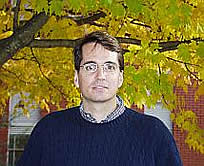MPEG Quantum Mechanics Movies
I have made several
MPEG movies that illustrate some simple quantum
mechanic principles and some more complicated situations from atomic
physics. The links
below are to text description of the different movies with a further
link to the MPEG files.
In all of the movies, I use atomic units. 1 atomic unit of energy is 27.21 eV, 1 atomic unit of length is the Bohr radius 5.292E-9 cm, and one atomic unit of mass is the rest mass of an electron. In these units, hbar=1 and c (the speed of light) is 137.036.
In all of the movies, I use atomic units. 1 atomic unit of energy is 27.21 eV, 1 atomic unit of length is the Bohr radius 5.292E-9 cm, and one atomic unit of mass is the rest mass of an electron. In these units, hbar=1 and c (the speed of light) is 137.036.
Simple Quantum Mechanics Wave
Packets
In most courses, time
independent aspects of quantum mechanics are
emphasized. This is a historical legacy from the early theoretical
development of quantum mechanics and also because most experiments
utilize tools that can only probe long times compared to the time
scales of the system being studied. The atomic unit of time which gives
an idea of typical times in atoms is roughly 2.4E-17 seconds. Compare
this with the time width of the fastest laser pulse which is roughly
100 attosecond (1.0E-16 seconds).
However, there are very good reasons to study the time dependent aspects of quantum mechanics. Visualization tools have now become powerful enough to routinely examine various cases. Also, our intuition mostly relates to the time dependent behavior of classical systems; quantum wave packets moving around in space is reminiscent of the motion of classical particles and can serve as a bridge between classical and quantum intuition. Finally, experiments in atomic, molecular and chemical physics are now available where the quantum system can be excited into a time dependent wave packet and the properties of the packet can also be probed.
All of the movies are for motion in one dimension. Unless specifically stated otherwise, the movies are of the temporal behavior of the probability density as a function of position. The normalization of the wave functions have been chosen for convenience of plotting and thus are not normalized so that the integral of the probability density equals 1.
Free particle colliding with an infinitely hard wall
Particle moving in a constant force field
Wave packet for a harmonic potential
Scattering from a DOWN stepping potential
Scattering from a potential barrier of finite height and width
Scattering from a potential with a sinusoidal modulation
However, there are very good reasons to study the time dependent aspects of quantum mechanics. Visualization tools have now become powerful enough to routinely examine various cases. Also, our intuition mostly relates to the time dependent behavior of classical systems; quantum wave packets moving around in space is reminiscent of the motion of classical particles and can serve as a bridge between classical and quantum intuition. Finally, experiments in atomic, molecular and chemical physics are now available where the quantum system can be excited into a time dependent wave packet and the properties of the packet can also be probed.
All of the movies are for motion in one dimension. Unless specifically stated otherwise, the movies are of the temporal behavior of the probability density as a function of position. The normalization of the wave functions have been chosen for convenience of plotting and thus are not normalized so that the integral of the probability density equals 1.
Free particle colliding with an infinitely hard wall
Particle moving in a constant force field
Wave packet for a harmonic potential
Scattering from a DOWN stepping potential
Scattering from a potential barrier of finite height and width
Scattering from a potential with a sinusoidal modulation
The theory behind the numerical propagation of Shrodinger's equation that was used to obtain the time dependent wave function is given here. This also contains links to the fortran program and data file for calculating the time dependent wave function.
Atomic Physics Movies
The movies described
in the following link demonstrate some aspects of
atomic physics using MPEG movies. The main difficult idea that I try to
illustrate is how to visualize the coupling of two different types of
motion as it is often realized in atomic physics. The main peculiarity
of atomic coupling results from the interaction between the different
electrons in the atom through the Coulomb potential and the fact that
usually only one electron can be highly excited at one time. Thus,
often there are two excited electrons but only one will have a large
number of nodes. In this case, the two electrons can only exchange
energy when both electrons are near the nucleus.
Visualizing the energy dependent properties of a Feshbach resonance
Radial wave packets for l=0: Hydrogen and Lithium
Autoionizing Rydberg wave packet
Visualizing the energy dependent properties of a Feshbach resonance
Radial wave packets for l=0: Hydrogen and Lithium
Autoionizing Rydberg wave packet

